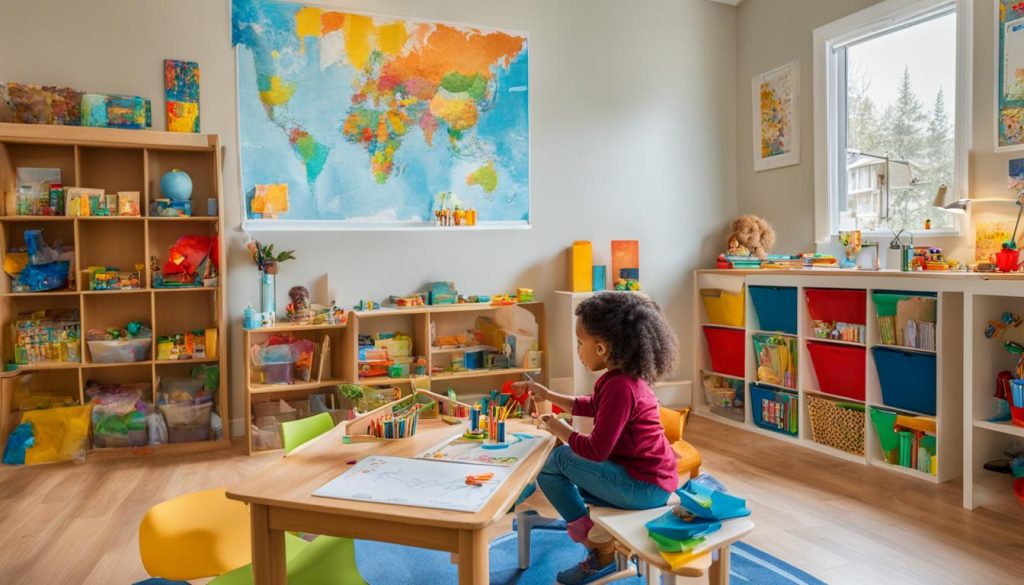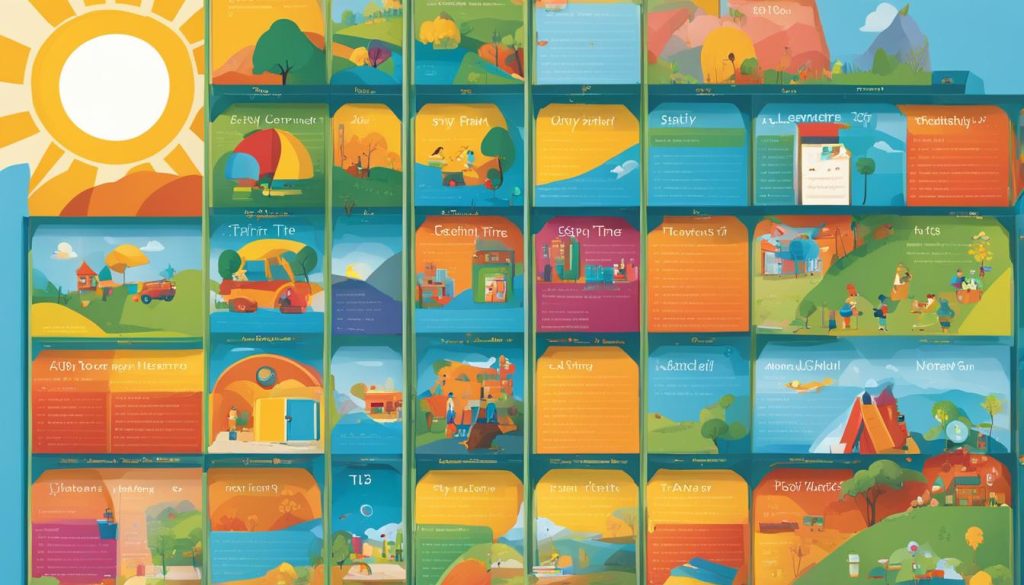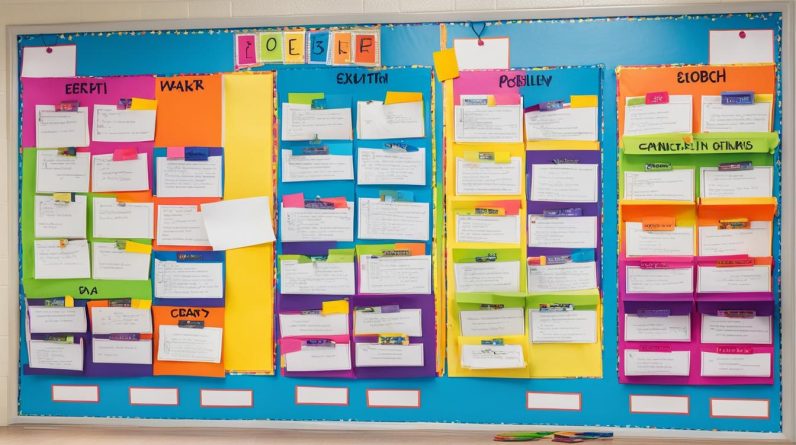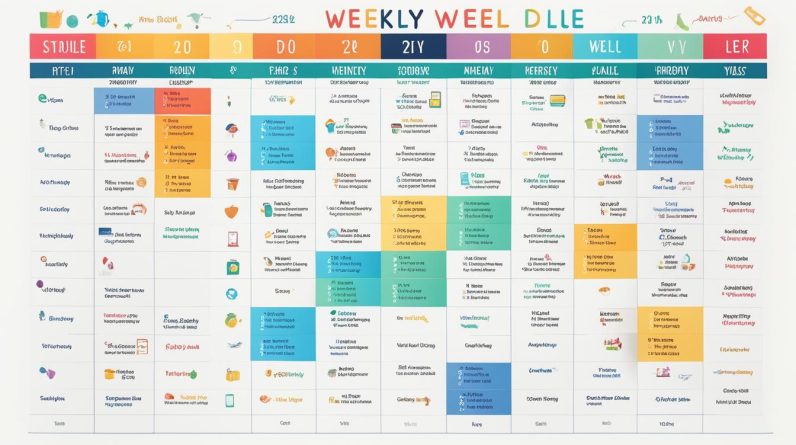Welcome to the world of home schooling for 5-year-olds! Many parents choose to embrace this educational path to provide their children with a personalized and flexible learning experience. By homeschooling your kindergartener, you have the freedom to tailor the curriculum to meet their individual needs and interests, ultimately empowering them in their early years of education.
With home schooling, you can provide your 5-year-old with individualized attention, allowing them to thrive in a supportive learning environment. As you embark on this journey, you have the opportunity to foster a love for learning and set a solid foundation for their future education.
Key Takeaways:
- Home schooling for 5-year-olds offers personalized and flexible education.
- Parents have the freedom to tailor the curriculum to their child’s needs and interests.
- Individualized attention empowers 5-year-olds in their early learning and development.
- Home schooling at this age can foster a love for learning and provide a strong educational foundation.
The Importance of Structure and Behavior Expectations
When homeschooling your 5-year-old, it is crucial to establish a structured routine to provide a sense of stability and organization. By implementing clear behavior expectations, you can create a positive learning environment and help your child thrive academically and emotionally.
- Communicate Behavior Expectations: Clearly communicate your expectations to your child so they understand what is expected of them during the school day. This will help set boundaries and provide a framework for their behavior.
- Specific Goals: Focus on one or two behaviors you would like your child to improve or change. Set specific and measurable goals, such as raising their hand during discussions or completing assignments independently.
- Homeschooling Schedule: Create a homeschooling schedule that includes dedicated time for learning, breaks, and activities. This schedule will help your child stay on track and provide a sense of routine and structure.
- Utilize Homeschool Resources: Take advantage of various homeschool resources and activities suitable for 5-year-olds. Engaging educational materials, such as interactive games, workbooks, and online resources, can make learning fun and exciting.
By establishing structure and behavior expectations, you provide a supportive learning environment that encourages your child’s growth and development. Keep in mind that each child is unique, so tailor your approach to their individual needs and learning style.
Remember, homeschooling is a journey that requires patience, flexibility, and understanding. Celebrate small victories and progress, and enjoy the process of guiding your child’s educational journey.
Example of a Homeschooling Schedule:
| Time | Activity |
|---|---|
| 9:00 AM – 9:30 AM | Math Lesson |
| 9:30 AM – 10:00 AM | Reading Time |
| 10:00 AM – 10:15 AM | Break |
| 10:15 AM – 10:45 AM | Writing Activity |
| 10:45 AM – 11:00 AM | Snack Time |
| 11:00 AM – 11:30 AM | Science Experiment |
| 11:30 AM – 12:00 PM | Art Project |
Remember to be flexible with your schedule and adapt it as needed. This is just an example to provide structure and give you a starting point for creating your own homeschooling schedule.
Engaging in structured activities and setting behavior expectations will not only enhance your child’s learning experience but also provide a solid foundation for their overall development. By creating a positive and supportive homeschooling environment, you can help your 5-year-old thrive academically and emotionally.
Motivating Your Child with Intrinsic Rewards
When it comes to early childhood homeschooling, motivation is key. To ensure your 5-year-old remains engaged and enthusiastic about learning, tapping into their natural curiosity and love for learning is crucial.
One effective way to motivate your child is by finding activities and resources that they genuinely enjoy and find rewarding. Tailoring the curriculum to their interests can make the learning process more enjoyable and fulfilling.
Additionally, incorporating intrinsic rewards into your homeschooling routine can be highly effective. Consider offering daily privileges or rewards, such as earning extra playtime or a special treat, as a way to motivate your child to complete their schoolwork with enthusiasm and focus.
Remember, breaks are important for maintaining motivation and enthusiasm. Allow your child to take breaks and engage in activities they enjoy. This can help prevent burnout and keep their love for learning alive.
“Motivation is the driving force behind successful homeschooling. Find what sparks joy and curiosity in your child and use it to fuel their learning journey.” – Jane Smith
To visualize the impact of intrinsic rewards on motivation, take a look at the table below:
| Reward | Description |
|---|---|
| Extra playtime | 1 hour of additional playtime after completing schoolwork |
| Special treat | A small treat or snack as a reward for completing tasks |
| Choice time | Opportunity to choose an activity or topic of interest |
By incorporating intrinsic rewards and tapping into your child’s natural curiosity, you can create a homeschooling environment that fosters motivation and a love for learning.

Allowing Flexibility in Learning Environments
When it comes to homeschooling your 5-year-old, creating a flexible learning environment can greatly enhance their educational experience. Not all children are comfortable sitting still for long periods, and allowing them to choose their preferred position or location for learning can make a significant difference in their engagement and focus.
Encourage your child to explore different ways of learning by sitting, standing, or even moving around while studying. This flexibility allows them to find a position that is most comfortable and conducive to their learning style. It also helps to prevent restlessness and promotes active participation in the learning process.
To further enhance your child’s engagement, incorporate hands-on and interactive activities into your homeschooling curriculum. These activities not only make learning more enjoyable but also provide a kinesthetic approach that appeals to different types of learners. By incorporating elements of play and exploration, you can make the learning experience exciting and impactful for your child.
“Learning should be a joyful experience that encourages exploration and discovery.”
To provide structure while still allowing freedom of movement, create designated spaces for different educational activities in your home. For example, you can have a dedicated area for reading and quiet activities, a space for artistic and creative endeavors, and a play area for hands-on experiments or physical activities. This organization helps your child understand and transition between different learning modes, promoting focus and routine.
Remember, the key is to create an environment that promotes engagement, exploration, and individuality. By allowing flexibility in learning environments, you can cater to your child’s unique needs and learning style, ensuring a fulfilling homeschooling experience.

| Benefits of Flexible Learning Environments | Examples of Flexible Learning Spaces |
|---|---|
| 1. Promotes active participation | 1. Reading nook with cozy cushions and a bookshelf |
| 2. Enhances focus and engagement | 2. Art corner with easels, paint, and craft supplies |
| 3. Appeals to different learning styles | 3. Science area with lab equipment and materials |
| 4. Fosters a sense of ownership and autonomy | 4. Outdoor play area for physical activities |
| 5. Creates a positive and enjoyable learning atmosphere | 5. Flexible workspace with adjustable desks and chairs |
Short and Engaging Lessons
When homeschooling a 5-year-old, it’s important to keep your lessons short and focused. This age group has a limited attention span, so aiming for 15-20 minute lessons can help maintain your child’s engagement and avoid boredom.
To ensure effective learning, choose a homeschool curriculum specifically designed for 5-year-olds. Look for age-appropriate content and activities that align with their developmental stage.
Make your lessons interactive, hands-on, and engaging to capture your child’s interest. Incorporate games, manipulatives, and real-life examples to facilitate active learning. This approach helps them develop a deeper understanding of the subject matter and promotes a love for learning.
Sample Short Lesson Plan
Subject: Science
Topic: The Solar System
- Start with a brief discussion about the solar system using colorful visuals and simplified explanations.
- Engage your child by asking open-ended questions like, “What are some planets you can name?” and “Why do you think the sun is so hot?”
- Introduce a hands-on activity such as creating a model of the solar system using craft materials, or a virtual simulation using educational software.
- Discuss interesting facts about each planet, emphasizing their unique characteristics.
- Conclude the lesson with a short quiz or review game to reinforce learning.

| Subject | Time Allotted |
|---|---|
| Math | 20 minutes |
| Language Arts | 15 minutes |
| Science | 20 minutes |
| Social Studies | 15 minutes |
| Art and Crafts | 20 minutes |
| Physical Education | 15 minutes |
Incorporating Physical Breaks and Movement
When homeschooling your 5-year-old, it’s important to recognize the significance of physical breaks and movement in their learning routine. While some children may struggle to sit still for extended periods, incorporating regular breaks and physical activity can help them release energy and maintain focus.
During your homeschooling schedule, make sure to include designated times for your child to engage in physical exercise and movement. This can involve activities such as running, jumping, or stretching, which not only release pent-up energy but also promote better concentration and engagement.
The Benefits of Movement Breaks
“Movement breaks allow children to release energy, enhance focus, and improve overall cognitive function.”
Short, frequent movement breaks throughout your child’s lessons can be highly beneficial. These breaks can help combat restlessness, improve blood circulation, and provide opportunities for your child to reset and refocus. By incorporating movement breaks, you create a more dynamic and engaging learning environment for your 5-year-old.
To give you an idea of how movement breaks can be integrated into your homeschooling routine, here’s a sample schedule:
| Time | Activity |
|---|---|
| 9:00 AM | Math Lesson |
| 9:20 AM | Jumping Jacks or Dance Party |
| 9:25 AM | Language Arts Lesson |
| 9:45 AM | Stretching Time |
| 10:00 AM | Science Exploration Activity |
As you can see in the sample schedule above, allocating time for movement breaks helps break up lessons and keeps your child actively engaged. These breaks can be as simple as a quick dance party or stretching session, allowing your child to refresh their mind and body before diving into the next subject.
Remember, movement breaks are not distractions but rather an essential component of your child’s homeschooling experience. By incorporating physical activity and movement, you create an environment that supports their natural need for movement while enabling them to focus and learn effectively.
In the next section, we will discuss the importance of adapting curriculum choices to cater to your child’s unique learning style and needs.
Adapting Curriculum Choices
When homeschooling your 5-year-old, it’s essential to choose a homeschool curriculum and resources that cater to their unique learning style and needs. By adapting the curriculum to fit your child’s requirements, you can create a personalized and engaging educational experience that promotes their love for learning.
Here are some tips to help you adapt the curriculum:
- Modify and adapt curriculum materials: Tailor the curriculum materials to suit your child’s specific needs. This may involve simplifying complex concepts or adjusting the pace of the lessons.
- Consider hands-on learning materials: Incorporate hands-on learning materials and educational games into your curriculum. This approach not only makes learning more interactive and engaging but also helps your child understand abstract concepts through practical experiences.
- Look for age-appropriate resources: Choose resources that are suitable for 5-year-olds and align with your child’s interests. This way, you can capture their curiosity and provide opportunities for exploration and discovery.
| Curriculum Adaptation Tips | Benefits |
|---|---|
| Modify and adapt curriculum materials | Ensures lessons are not overwhelming for your child |
| Consider hands-on learning materials | Makes learning more interactive and engaging |
| Look for age-appropriate resources | Captures your child’s interest and fosters exploration |
Adapting your curriculum choices allows you to create a customized learning experience that meets your child’s individual needs, ensuring their homeschooling journey is enjoyable and effective.

Testimonial
“Adapting the curriculum has made all the difference in my 5-year-old’s homeschooling journey. By tailoring the materials to his needs and incorporating hands-on activities, he has become more engaged and excited about learning!”
– Emma, Homeschooling Parent
Patience and Understanding
When homeschooling a child who struggles to sit still, it’s important to approach the journey with patience and understanding. Each child is unique and learns in their own way, so it’s crucial to avoid comparing your child to others.
Celebrate the small victories and progress your child makes, even if it’s not always apparent in conventional ways. Remember that learning is not just about academic achievements, but also about personal growth and development.
Create a supportive and nurturing environment that emphasizes the joy of learning. Encourage your child’s individual growth by fostering a love for education and providing them with the resources they need.
“Education is not the filling of a pail, but the lighting of a fire.” – W.B. Yeats
Benefits of Patience and Understanding
- Promotes a positive learning environment
- Builds trust and rapport with your child
- Reduces stress and frustration for both you and your child
- Allows for personalized and tailored instruction
| Actions | Impact on Your Child |
|---|---|
| Show empathy | Makes your child feel understood and supported |
| Provide clear instructions | Helps your child stay focused and engaged |
| Allow for breaks | Prevents burnout and promotes productivity |
| Encourage self-expression | Fosters creativity and critical thinking skills |
Remember, homeschooling is a journey that requires patience and understanding. By creating a supportive and nurturing environment, you can empower your 5-year-old with the tools they need to thrive in their educational journey.
Considering Dietary Changes
When it comes to homeschooling for kindergarten and engaging homeschooling activities for 5-year-olds, it’s important to consider all aspects of your child’s well-being. One area that can significantly impact their focus and attention is their diet. Research suggests that certain dietary changes can have a positive impact on behavior and concentration in children.
Studies have shown that reducing or eliminating certain substances from a child’s diet, such as caffeine, sugar, artificial dyes, and gluten, can lead to improved focus and attention. These substances can affect children differently, and their sensitivities may vary.
Consulting with a healthcare professional or nutritionist can help you determine the best approach for your child’s specific needs. They can guide you in making informed decisions about potential dietary changes and provide expert advice tailored to your child’s unique requirements.
Benefits of Dietary Changes
Reducing or eliminating certain substances from your child’s diet can help support their focus and attention during homeschooling. Here are some potential benefits:
- Improved concentration: A diet free from caffeine, sugar, artificial dyes, and gluten can help your child maintain better focus and concentration.
- Stable energy levels: Minimizing processed sugars and caffeine can help prevent energy crashes and promote more consistent energy levels throughout the day.
- Reduced behavioral issues: Some children may experience fewer behavioral challenges when certain substances are removed from their diet.
- Enhanced overall well-being: A balanced and nutritious diet can contribute to your child’s overall health and well-being, supporting their ability to thrive academically and emotionally.
Remember, every child is unique, and their dietary needs may vary. Consulting with a healthcare professional or nutritionist can help you determine the best approach for your child’s specific situation.
| Dietary Changes | Impact on Focus and Attention |
|---|---|
| Reducing or eliminating caffeine | Potential for increased focus and reduced hyperactivity |
| Reducing or eliminating sugar | Potential for more stable energy levels and improved concentration |
| Avoiding artificial dyes | Potential for decreased hyperactivity and improved behavior |
| Eliminating gluten | Potential for reduced brain fog and improved cognitive function |
Remember to monitor your child’s response to dietary changes and make adjustments as needed. The goal is to create an optimal learning environment that supports your child’s focus, attention, and overall well-being.
Now that we’ve explored the potential benefits of dietary changes in homeschooling for kindergarten and homeschooling activities for 5-year-olds, let’s move on to the next section, where we will discuss the importance of emphasizing real-life connections and experiences.
Emphasizing Real-Life Connections and Experiences
Foster a love for learning in your 5-year-old by incorporating real-life connections and practical experiences into your homeschooling curriculum. One of the advantages of homeschooling is the flexibility to create meaningful learning opportunities that go beyond textbooks and worksheets.
Take advantage of field trips, outings, and hands-on activities that allow your child to explore, apply their knowledge, and make real-world connections. Visiting museums, parks, and local landmarks can provide valuable learning experiences and spark your child’s curiosity.
For example, if you’re teaching a lesson on plants and nature, you could plan a trip to a botanical garden or park. Let your child observe different types of plants and learn about their characteristics in a hands-on and interactive way.
“The world is your classroom. Every experience can be a learning opportunity.”
Encourage your child to ask questions, investigate, and discover new things. This sense of curiosity and exploration will nurture their love for learning and promote lifelong learning skills.
Example Field Trip Ideas:
| Field Trip | Description |
|---|---|
| Science Museum | Explore interactive exhibits and learn about scientific concepts in a fun and engaging way. |
| Zoo or Wildlife Sanctuary | Observe and learn about different animals, their habitats, and conservation efforts. |
| Local Farm | Experience farm life, learn about agriculture, and understand where food comes from. |
| Historical Site | Immerse yourself in history by visiting museums, historical landmarks, or exploring sites of cultural significance. |
These outings provide valuable opportunities for hands-on learning, observation, exploration, and interaction with the world around them. Encourage your 5-year-old to document their experiences through drawings, journaling, or taking photographs. This will further deepen their understanding and create lasting memories.
Remember, the world is your classroom, and every experience can be a valuable learning opportunity. By emphasizing real-life connections and experiences, you can make homeschooling an engaging and enriching experience for your 5-year-old.
Cultivating a Love for Learning
When homeschooling your 5-year-old, one of the key goals is to cultivate a love for learning. By incorporating engaging and enjoyable educational experiences, you can instill a lifelong passion for education in your child.
Make learning a fun-filled adventure by incorporating games, stories, and play-based activities into your homeschooling routine. Encourage your child to participate actively and let their natural curiosity drive their learning journey. Whether it’s through hands-on experiments, imaginative storytelling, or interactive games, find ways to capture your child’s interest and curiosity.
It’s important to celebrate progress, achievements, and the joy of learning with your child. Recognize and appreciate their efforts, no matter how small, to foster a positive attitude towards education. By creating a supportive and encouraging environment, you can nurture your child’s confidence and excitement to explore new knowledge and skills.
FAQ
Why do some parents choose to homeschool their 5-year-olds?
Many parents choose to homeschool their 5-year-olds to provide them with personalized and flexible education. Homeschooling gives parents the freedom to tailor the curriculum to their child’s needs and interests, allowing for individualized attention and a focus on early learning and development.
How can I establish structure and behavior expectations in my homeschooling routine?
Establishing a structured routine is essential for homeschooling 5-year-olds. Clearly communicate behavior expectations and let your child know what you expect of them during the school day. Focus on one or two behaviors you’d like them to improve or change and provide specific, measurable goals. Implement a homeschooling schedule to help your child stay on track and create a sense of routine.
What resources and activities are suitable for homeschooling 5-year-olds?
To engage 5-year-olds in learning, utilize various homeschool resources and activities suitable for their age. Tap into your child’s natural curiosity and love for learning. Find activities and resources that your child genuinely enjoys and find rewarding. Use daily privileges and rewards to motivate your child, such as earning extra playtime or a special treat after completing their schoolwork.
How can I accommodate a child who struggles to sit still during homeschooling?
Children who struggle with sitting still can benefit from flexible learning environments. Allow your child to choose their preferred position or location for learning, such as sitting, standing, or even moving around. Incorporate hands-on and interactive activities into the curriculum to keep your child engaged and active in their learning process. Create designated spaces for different educational activities to provide structure while still allowing freedom of movement.
How long should lessons be for 5-year-olds in homeschooling?
Keep your lessons short and focused, as 5-year-olds have a limited attention span. Aim for 15-20 minute lessons to maintain your child’s engagement and avoid boredom. Choose a homeschool curriculum designed specifically for 5-year-olds, with age-appropriate content and activities. Make lessons interactive, hands-on, and engaging to capture your child’s interest and facilitate active learning.
How can I incorporate physical breaks and movement into homeschooling for 5-year-olds?
Recognize the importance of physical breaks and movement for children who struggle to sit still. Incorporate regular breaks into your homeschooling schedule, providing opportunities for physical exercise and movement. Encourage your child to engage in activities that involve running, jumping, or stretching to release energy and promote focus. Allow for short, frequent movement breaks during lessons to enhance engagement and maintain attention.
How can I adapt curriculum choices for my 5-year-old’s needs?
Choose homeschool curriculum and resources that cater to your child’s learning style and needs. Modify and adapt curriculum materials to meet your child’s unique requirements. Trim down lessons if necessary to prevent overwhelming your child. Consider hands-on learning materials and educational games to make the curriculum more interactive and engaging. Look for age-appropriate resources that align with your child’s interests and provide opportunities for exploration and discovery.
What should my attitude be towards homeschooling when my child struggles to sit still?
Practice patience and understanding as you navigate homeschooling with a child who struggles to sit still. Remember that each child is unique and learns in their own way. Avoid comparing your child to others. Celebrate small victories and progress, even if it’s not always apparent in conventional ways. Provide a supportive and nurturing environment that emphasizes the joy of learning and encourages your child’s individual growth.
Should I make dietary changes to support my 5-year-old’s focus during homeschooling?
Some studies suggest that reducing or eliminating caffeine, sugar, artificial dyes, and gluten from a child’s diet can have a positive impact on behavior and concentration. Consult with a healthcare professional or nutritionist to determine the best approach for your child’s specific needs.
How can I cultivate a love for learning in my 5-year-old through homeschooling?
Foster a love for learning by making real-life connections and incorporating practical experiences into your homeschooling curriculum. Take advantage of field trips, outings, and hands-on activities that allow your child to explore and apply their knowledge in meaningful ways. Encourage curiosity and provide opportunities for your child to ask questions, investigate, and discover new things. Focus on cultivating a love for learning in your 5-year-old through engaging and enjoyable educational experiences.






